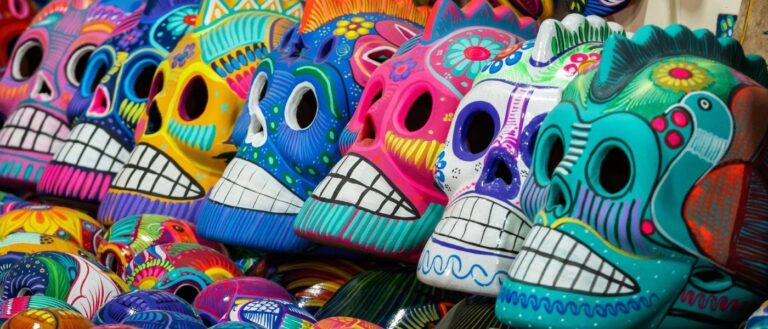
Animated movies such as The Book of Life (2014) and Disney's Coco (2017) propelled Día de los Muertos (Day of the Dead) into the mainstream globally, prompting mass production of merchandise and paraphernalia. But did you know this annual two-day observance dates back more than 3,000 years?
Typically celebrated Nov. 1 and 2, the tradition's symbols are now more commonplace, yet many people have misconceptions about the holiday-from believing it's a sad occasion solely focused on death, to mislabeling it as "the Mexican version of Halloween."
To debunk these misconceptions, The Daily spoke with Nohora Viviana Cardona Núñez, a Spanish lecturer in Case Western Reserve University's Department of Modern Languages and Literatures. Read on to learn five facts Cardona Núñez shared that you might not have known about Day of the Dead.
1. Day of the Dead can be traced to pre-Columbian Mesoamerica.
Ancient Aztec (and other Nahua group) rituals often viewed death as an essential, cyclical part of life-a concept which is used in today's Day of the Dead practices. While there is some sadness, the Day of the Dead is filled with happiness and love as family members and friends of all ages (and backgrounds) come together to celebrate and honor the lives of those who passed away through storytelling, music and dancing-though different individuals celebrate in different ways. Some may choose to clean up and leave flowers at the gravesite of their loved one(s), while others may host a feast with family and friends.

2. Ofrendas (or 'offerings') are central to the celebration.
One of the most common Day of the Dead traditions is building an altar that acts as a doorway for the deceased to visit their living relatives. Typically, these altars are built and decorated with photos, calaveras, candles, papel picado (paper banners), letters and more. Other symbols indicative of the four elements (water, earth, fire, air) are included to assist the deceased with the journey back to the mortal world (i.e. water to quench thirst and salt for preservation). Some ofrendas also include details associated with Catholic traditions-such as crosses and candles-to assist the dead in safely arriving at their destinations.
3. Food is a key part of the ofrenda.
From chocolate and tamales to marigold-infused cocktails, the favorite food and beverages of those being honored are prepared to show the continuous care that the living has for their loved ones, even though they are no longer physically present. One example is Pan de Muerto (or "bread of the dead"), a traditional Mexican sweet bread baked in the shape of skulls or bones, which is believed to sustain the deceased. Another popular food included on the altars is sugar skulls, which are brightly decorated to represent the deceased individual's personality and vitality of life.
4. Marigolds are believed to serve as the pathway to the mortal world.
Thought to guide lost souls to their appropriate destinations with their vibrant appearance and strong fragrance, marigold petals can be seen scattered throughout altars during Day of the Dead. This bright orange and yellow flower is also used to signify the beauty and fragility of life.

5. Day of the Dead is celebrated worldwide.
Despite the common belief that the Day of the Dead is exclusively a Mexican tradition, other countries celebrate the holiday-including Belize, Bolivia, Brazil, Costa Rica, Ecuador, Guatemala and Peru-each with their own singularities. For example, in Bolivia, some altars may include coca leaves or cigarettes as a gesture. Celebrations can also be found throughout Cleveland (and other U.S. cities)-from parades and musical presentations to traditional dances and mask and costume workshops.
Learn more about the traditions of the Day of the Dead.






